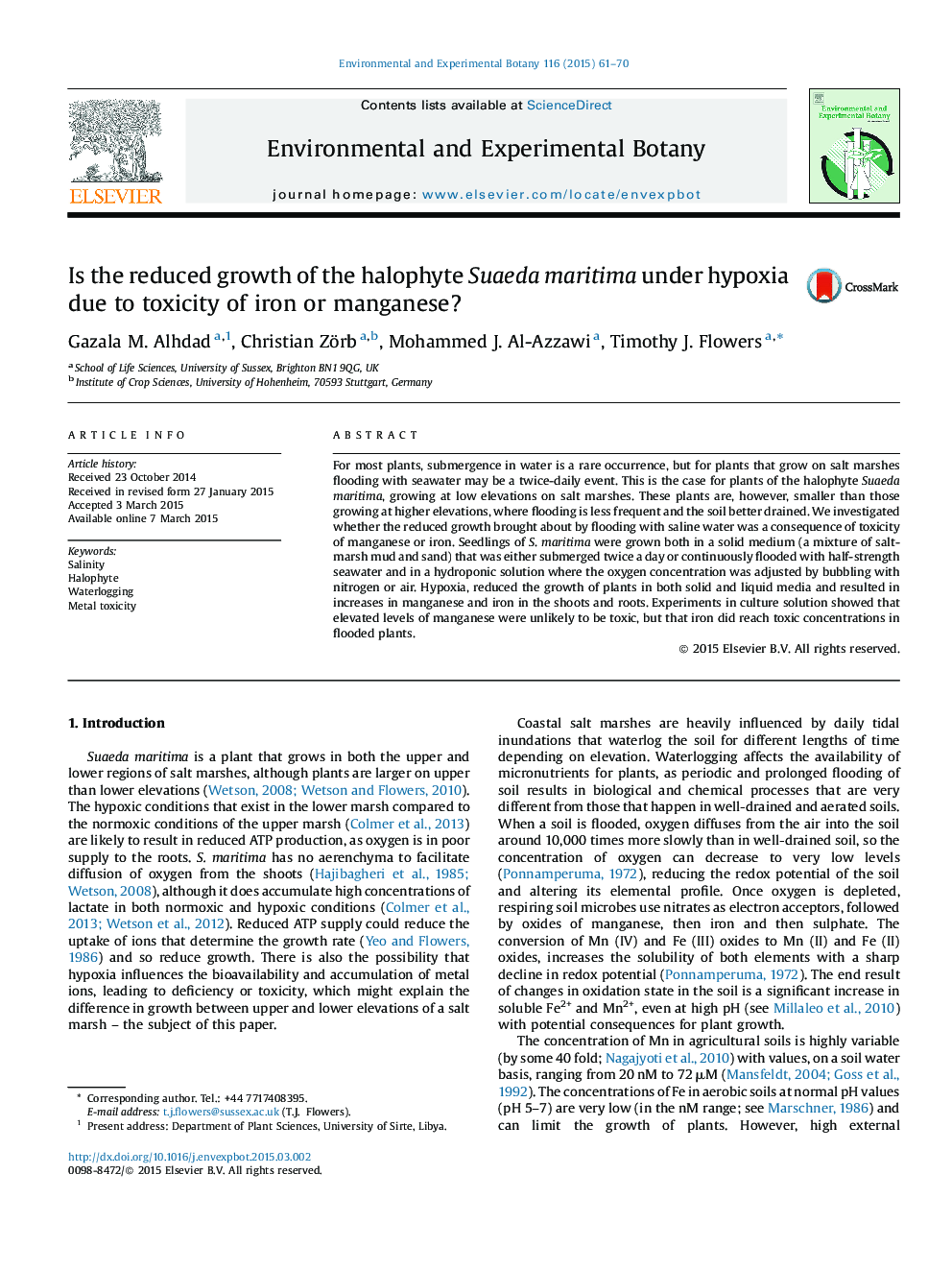| Article ID | Journal | Published Year | Pages | File Type |
|---|---|---|---|---|
| 4554246 | Environmental and Experimental Botany | 2015 | 10 Pages |
•Elevation, determines the flooding and hypoxia experienced by salt-marsh plants.•Plants of Suaeda maritima at lower elevations are smaller than those higher up the marsh.•We grew S. maritima in flooded soil and hypoxic culture solution.•Hypoxia, reduced growth and increased manganese and iron in shoots and roots.•We showed Mn was unlikely to be toxic, but Fe could reach toxic concentrations.
For most plants, submergence in water is a rare occurrence, but for plants that grow on salt marshes flooding with seawater may be a twice-daily event. This is the case for plants of the halophyte Suaeda maritima, growing at low elevations on salt marshes. These plants are, however, smaller than those growing at higher elevations, where flooding is less frequent and the soil better drained. We investigated whether the reduced growth brought about by flooding with saline water was a consequence of toxicity of manganese or iron. Seedlings of S. maritima were grown both in a solid medium (a mixture of salt-marsh mud and sand) that was either submerged twice a day or continuously flooded with half-strength seawater and in a hydroponic solution where the oxygen concentration was adjusted by bubbling with nitrogen or air. Hypoxia, reduced the growth of plants in both solid and liquid media and resulted in increases in manganese and iron in the shoots and roots. Experiments in culture solution showed that elevated levels of manganese were unlikely to be toxic, but that iron did reach toxic concentrations in flooded plants.
